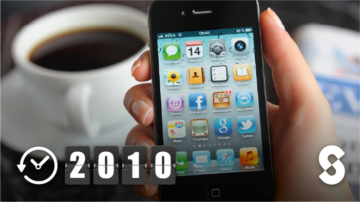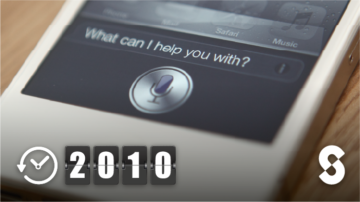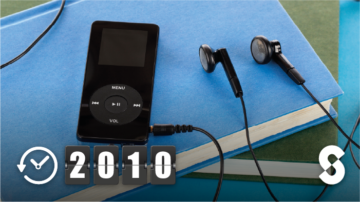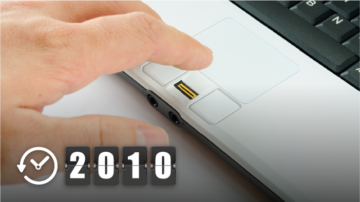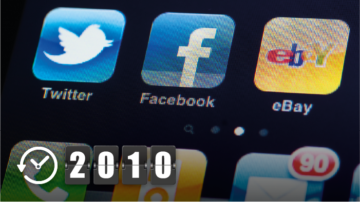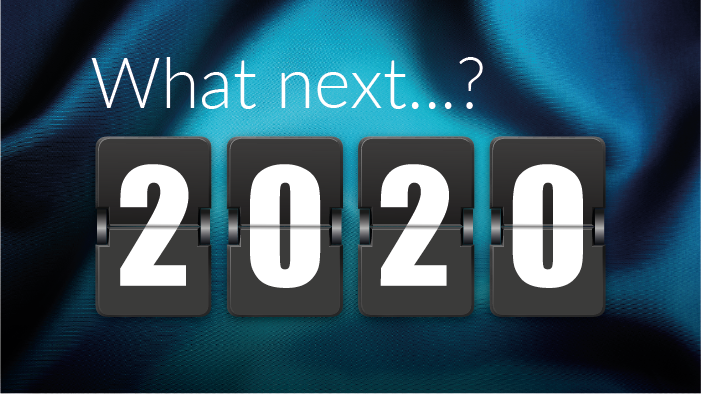System Concepts 10 year challenge…
With the 10-year challenge circling social media to mark the start of the new decade, we thought we’d look at how the evolution of technology since 2010 has changed UX and AX, as well as the nature of our work here at System Concepts.
Let’s take you back to 2010…
- The desktop PC was being replaced with laptops.
- Apple released the first-generation iPad, selling 8 million units within the first 80 days of sale1.
- You could now buy a 3D television.
- Facebook had exceeded 500 million users2, whilst instant messengers were losing steam.
- You probably hadn’t even heard of Uber or Instagram yet.
- It was the year that One Direction was formed through the X Factor.
With the increase in people owning mobile phones, you could say that 2010 was the start of the UX industry ‘boom’. The term UX became somewhat of a buzzword, which mirrored a shifted focus towards the design of digital websites and mobile apps. Following the release of the Equality Act 2010, businesses also began to consider the accessibility of their digital products and services more seriously.
So, what’s changed?
We have seen many new technologies rise (and fall) over the last decade; Microsoft Kinect, Google Glass, Vine and the Windows 7 phone may ring a bell… over the next few days, we will present five technologies that we believe have succeeded in the last 10 years.
1. Smartphones
Smartphones have become an indispensable companion for the majority of the western population, with 78% of UK adults stating that they couldn’t live without their mobile. This includes disabled people, for which mobiles have provided greater independence through built-in screen readers, voice command and a range of assistive apps.
Since 2010, increases in power, memory and internet speed have allowed mobiles to evolve to support banking, ticketing, authentication, streaming and navigation to name a few. In fact, some products, such as certain railcards, are now only available via smartphone.
For UX, this presented a challenge to simplify the amount of information displayed on a PC screen down to the size of your hand, whilst also ensuring a responsive design that could adapt to the ever-increasing variation in screen sizes. At System Concepts, we now commonly conduct usability testing on desktop, tablet and mobile to ensure that all the different interactions and issues are captured through our research. Who knows whether folding smartphones will soon be added to our list?
2. Virtual assistants
Since the release of Siri in 2011, virtual assistants have become commonplace in our lives, providing real-time information on pretty much anything. With assistants integrated into smartphones, as well as in almost a quarter of UK homes, they remove the number of steps required for users to conduct a search or action. Connected to the internet of things within the home, these could be physical steps (such as walking to turn off the light), as well as button presses (to look up the weather forecast or play your favourite song).
If you watch a recent advert for Amazon Alexa, you’ll see that virtual assistants can drastically improve accessibility for those with disabilities such as visual impairments. As well as saving time and effort by allowing users to interact hands-free, a recent project by System Concepts found that virtual assistants are “shift[ing] the model from technology-literate people to people-literate technology”, therefore widening the inclusion net. We are excited to conduct more research around the humanisation of virtual assistants in the 2020s; our only worry is that some people may lose other skills such as learning new languages or even typing!
3. Streaming services
We’ve ditched hardware like MP3 players and DVDs over the last decade in favour of streaming services. Whilst you may have been looking into the purchase of a 3D Blu-ray player in 2010, you’re now most likely signed up to Netflix, Amazon Prime or Sky Movies. With the flexibility of subscriptions, access from anywhere and up-to-date content, you can understand why streaming offers greater convenience.
With an increasingly saturated market, however, the user experience has been shown to have as great an impact as content on perceived value; meaning that navigation, browsing and accessibility must meet best practice UX principles. Having worked on several projects for media services, System Concepts understands the importance of mapping the entire customer journey from discovery through to leaving a service, in order to uncover and address pain points.
4. Biometrics
Since 2010, we have seen an influx of devices that use biometrics to track our fitness levels, promote wellbeing and recognise who we are. Most mobile devices can now identify their owner through fingerprint or facial recognition, removing the physical workload of entering a passcode, whilst increasing security.
There is also huge potential for biometrics use in areas including healthcare, airports and banking; thereby increasing the efficiency of services and ultimately the user experience.
Whilst biometrics provide a lot of useful data, improvements in this space (e.g. emotion detection) also rely on users being willing to share personal data. With GDPR (General data protection regulation) guidelines released in 2019, privacy is at the forefront of users’ minds, and although we understand its importance, believe it is likely to remain a barrier to technology advancements for the next few years yet.
5. App giants
Uber, Just Eat and Airbnb are just some of the apps that you may have downloaded over the last decade to search for and book services. Despite none of them owning any vehicles, restaurants or property, the user experience provided by each business has led to huge global success due to seamless interfaces and effective back-end systems that remove previous efforts from users, such as making a phone call.
However, the rapid advancement of apps has also led to increasingly high expectations from users, where the smallest usability issues can cause significant dissatisfaction. Our work with Just Eat in 2018 highlighted the importance of repeated user research to understand changing user needs, and we are looking forward to conducting research to optimise other revolutionary apps in the near future.
So, what happens next?
In the 2020s, we expect to see the rise of more automated services as robotic advancements reduce the need for human control. Alongside the development of autonomous cars, production, delivery and customer services are likely to be run by robots, with an increased focus on their environmental impact.
With the rise of 5G, we will be able to access information faster and connectivity will spread into more products to offer seamless control over a network of devices. All products and services will also feel a greater pressure to become accessible to those with disabilities, with integrated assistive technology. However, a big question still looms around whether privacy fears and infrastructure will be able to keep up with technological advancements.
Take a look at our recent ‘All I want for Christmas is…’ article, which outlines 12 of our UX wishes for the coming year, including a wish for the value of accessible design to be recognised and a wish for better voice recognition technology.

Contact our friendly, experienced team of UX and accessibility specialists

